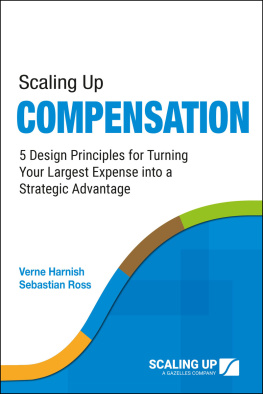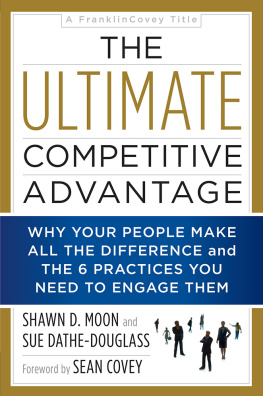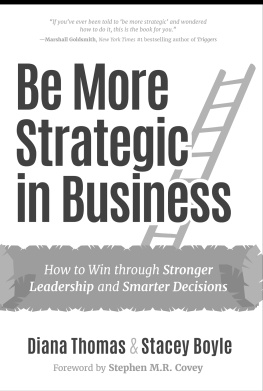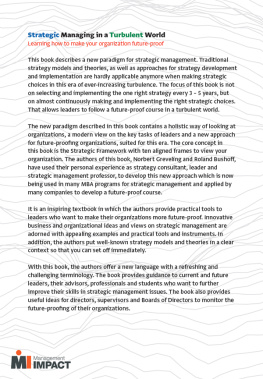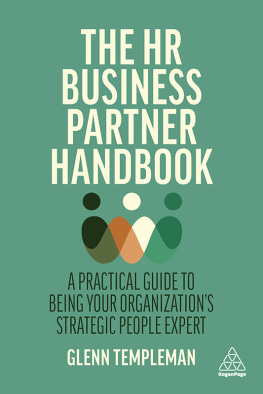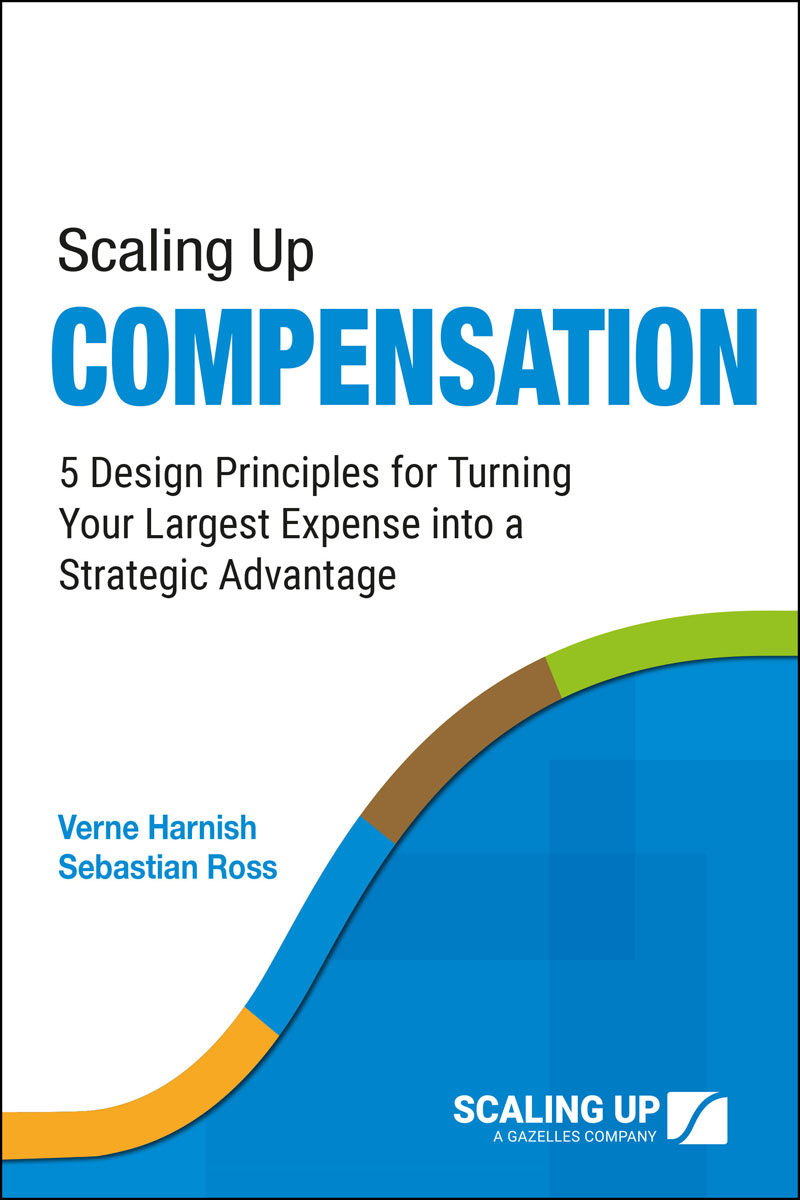
SCALING UP COMPENSATION:
5 Design Principles for Turning Your Largest Expense into a Strategic Advantage
Copyright 2022 by ForbesBooks. All rights reserved.
No part of this book may be used, reproduced, or stored in a retrieval system, or transmitted in any form or by any means electronic, mechanical, photocopying, recording, or otherwise without the express written permission of the publisher.
Published by ForbesBooks
www.forbesbooks.com
First Edition
ISBN 978-0-9860195-7-9
Printed in the United States of America
10 9 8 7 6 5 4 3 2
The Table of Contents
Overview 5 Principles for Effective Compensation Design
EXECUTIVE SUMMARY:Compensation is one of your largest expenses and, therefore, one of your most important strategic decisions. It requires careful thought. There are many psychological considerations and 5 design principles in crafting a unique compensation plan that fits your culture and your strategy while avoiding drama. The goal is to get compensation right and out of sight; incentivize the right behaviors that drive results; and contribute to the overall energy of the organization not drain it!
I gave a star performer a raise, and now everyone else is marching into my office, demanding one, too. If anyone looked closely at our payroll, it would be hard to rationalize why were paying certain people what we do. Im tired of losing our best people to the Googles of the world because we cant match their salaries. It seems like our bonus plans have become entitlements like were just giving money away.
In my nearly 40 years of researching, teaching, and coaching in the scaleup world, Ive heard many similar frustrations and concerns about compensation. To make matters worse, one Oxford dictionary definition of the term compensation is something, typically money, awarded to someone as a recompense for loss, injury, or suffering (as in) seeking compensation for injuries suffered at work. The irony of this definition isnt lost on us and explains why compensation is the only reason some people stay in a toxic workplace environment. Its also why terms like remuneration, pay, and wage are used in other parts of the world!
Most leaders wish they knew more about how to benefit from the strategic value that a sound compensation system can generate but cant find the information they need in one place. They suffer through all the drama that comes from bad (random!) compensation design without the benefits that should come from one of the largest expenses in their organization.
Listening to their concerns troubled me because I knew it didnt have to be this way. I had come across dozens of well-designed and effective compensation plans over the years and had identified some common patterns of what works and what doesnt.
I wasnt alone in noticing this knowledge gap, as I discovered during my regular Friday luncheons at Carlitos with my friend and co-author of this book Sebastian Ross. He had helped me write the three People chapters in my book, Scaling Up, and the topic of People came up often during our weekly gatherings over the eight years I lived in Barcelona.
Sebastian had been a very people-oriented entrepreneur, CEO, and investor for most of his professional life, and had recently taken a half-time stint as Chief People Officer (CPO) at TMC, a teleradiology provider headquartered in Barcelona, Spain, with 430 employees scattered around the globe. The other half of his time, Sebastian supported our writing efforts by researching, reading, and curating countless books and articles on topics like recruiting, organizational structure, coaching, leadership development, onboarding, and compensation.
Sebastian had known TMC and its founders since inception, had been consulting with the senior leadership team and was a good friend of CEO Alexander Boehmcker, whom he had recommended to TMCs board three years earlier. Yet he had never focused so intensely on the strategic aspects of HR (culture, employer brand, leadership, etc.) as he was doing now, helping navigate the People side of this rapidly growing business a real-world crucible where he had already implemented several effective compensation plans and had the liberty to experiment further.
Both of us saw a significant lack of knowledge and attention to compensation among scaleups. And astonishingly, neither of us could identify a single practical book on compensation that we would recommend to our clients (or at least one that was less than 400 pages). The market was lacking a book we would want to read as leaders of our own firms, one that was curated down to a length mere mortals could digest.
We also felt that the topic needed to be approached from a general business vs. a functional perspective. For us, a People department is less of a group of functional experts focused on engagement and employee wellbeing and more of an operational unit that serves the business and supports its strategy. All People practices, including compensation, need to create tangible value for the companys stakeholders, especially for its customers. And approaching the compensation topic from this angle makes it more relevant and beneficial for any scaleup leader, not just the HR people.
With these reflections, we finished our meal at Carlitos Restaurant that afternoon nothing better than a late Friday lunch with a good friend and a glass of Ribera del Duero and committed to writing Scaling Up Compensation, the book you are holding in your hands (or looking at on a screen). What follows is a collection of stories, including TMCs, and proven practices, to help you design a compensation system that turns your largest expense into a strategic advantage.
Strategic Decision, Large Expense
How you compensate your people is one of the most important strategic decisions you will make. It can give you a significant advantage over the competition, support or hinder the culture of the business, and drive (or not) the behaviors you need to scale your organization. And since it is likely one of the largest expenses, if not the largest, fueling your business, it requires thoughtful consideration. Yet, like pricing, many of the compensation schemes weve seen are WAGs wild-ankle-guesses at best.
If this sounds familiar, this book offers guidance. We provide you with the vocabulary and the practical insights you need to design a compensation system that drives your strategy and minimizes drama while you scale the organization. We structure our thoughts in the form of 5 principles that will guide you in your design process. Each design principle constitutes a chapter in the book.

The remainder of this Overview is a comprehensive summary of the book. If you head up the People function, we recommend you read the entire book, and might even choose to skip this summary chapter. If you are the CEO or lead other functions or business units, we suggest you read this Overview and then dig deeper into the areas that apply to you. Here is a summary of the 5 design principles:
Principle #1 Be Different: Aligning Compensation with Culture and Strategy
Lincoln Electric is not a place for everybody. The 125-year-old manufacturer of welding products, headquartered in Cleveland, Ohio, is a tough environment. The firm runs a merciless piece-rate regime that pays workers for output and quality, not for time. If you drill the wrong size holes or lay sick in bed, you dont get paid. In busy times, you might work 60 hours, when things are slow, only 30 hours (and you only get paid for 30).
Next page
